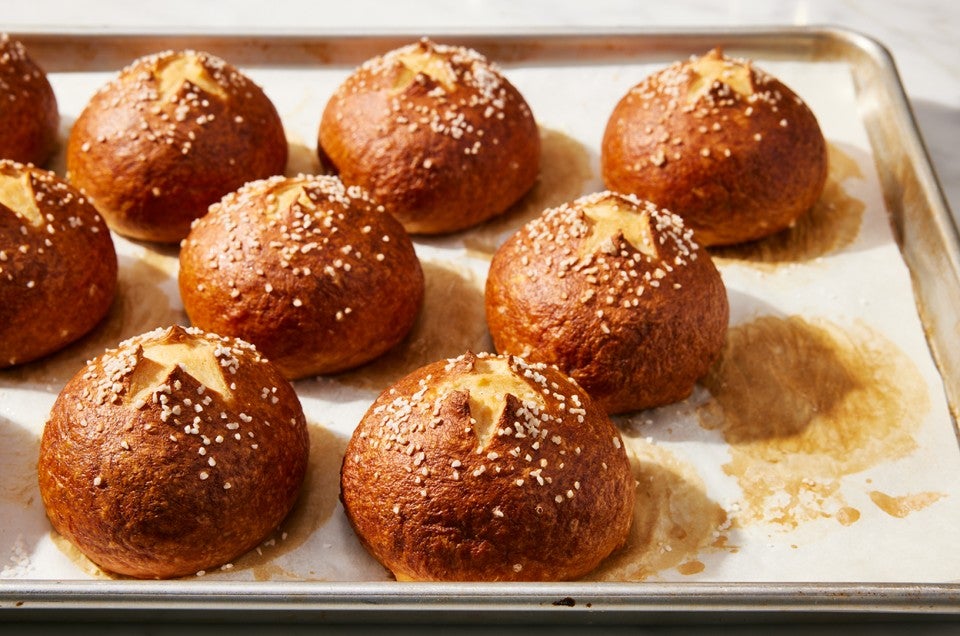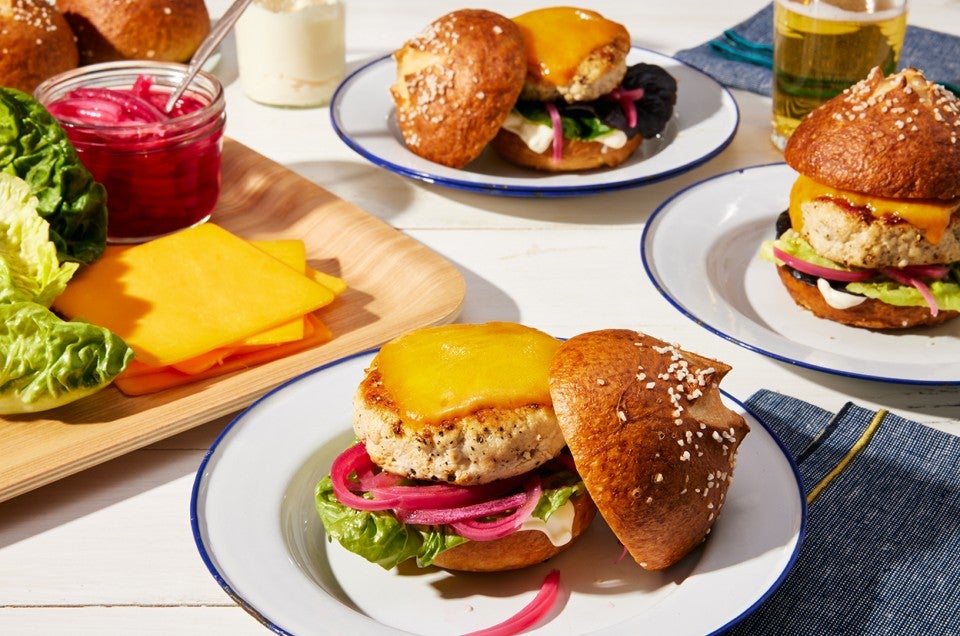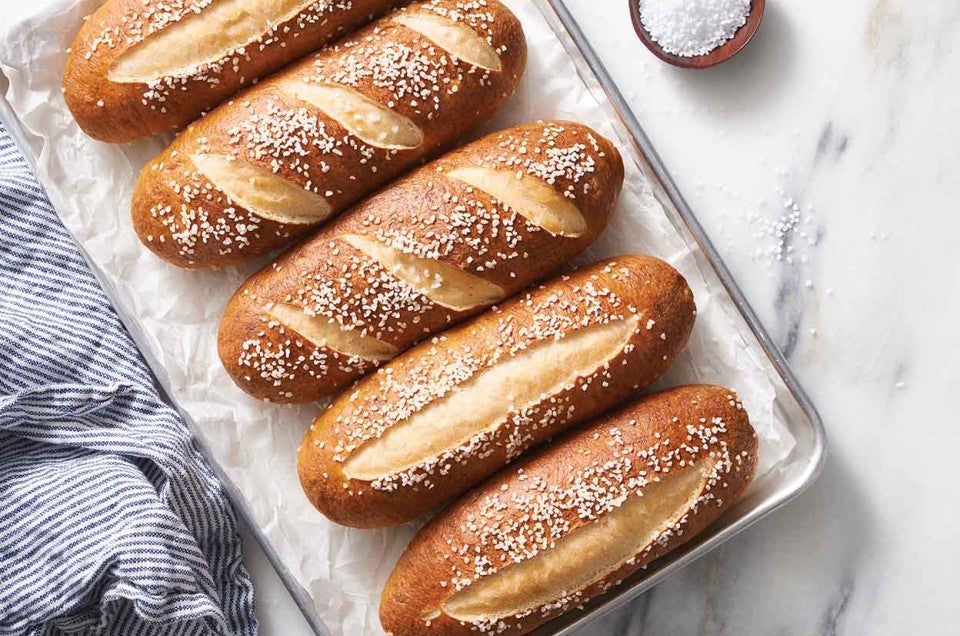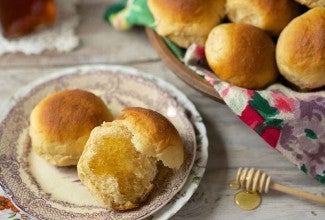-
Weigh your flour; or measure it by gently spooning it into a cup, then sweeping off any excess. Mix and knead the dough ingredients — by hand, mixer, or bread machine — to make a smooth, slightly sticky dough, about 5 minutes if using a stand mixer.
-
Allow the dough to rise in a lightly greased bowl, covered, for about 1 hour, until doubled.
-
Gently deflate the dough, and transfer it to a lightly greased work surface.
-
Divide the dough into 10 pieces (about 100g each) and shape each piece into a smooth ball. Flatten each dough ball with the palm of your hand until it's about 3" across. (Alternatively, for instructions on how to shape long sub-style sandwich buns, see the tip below.)
-
Lightly grease a baking sheet; or line the sheet with parchment and grease the parchment. Place the balls on the baking sheet, cover, and let rest for 15 minutes.
-
Preheat the oven to 400°F.
-
Prepare the water bath: Bring the water, salt, and baking soda to a boil in a large pot.
-
Drop 5 dough balls at a time into the water bath.
-
Cook for 30 seconds, flip over, and cook for 30 seconds longer. Using a slotted spoon, return the buns to the baking sheet.
-
While the pretzel buns are still warm from the water, sprinkle them with coarse sea salt. Using a lame or sharp knife, cut 1/2"-deep crosses into the center of each bun. Boil, top, and score the remaining 5 buns.
-
Bake the pretzel buns for 20 to 24 minutes, or until they're a deep-dark brown. Remove them from the oven, and transfer to a rack to cool.





















